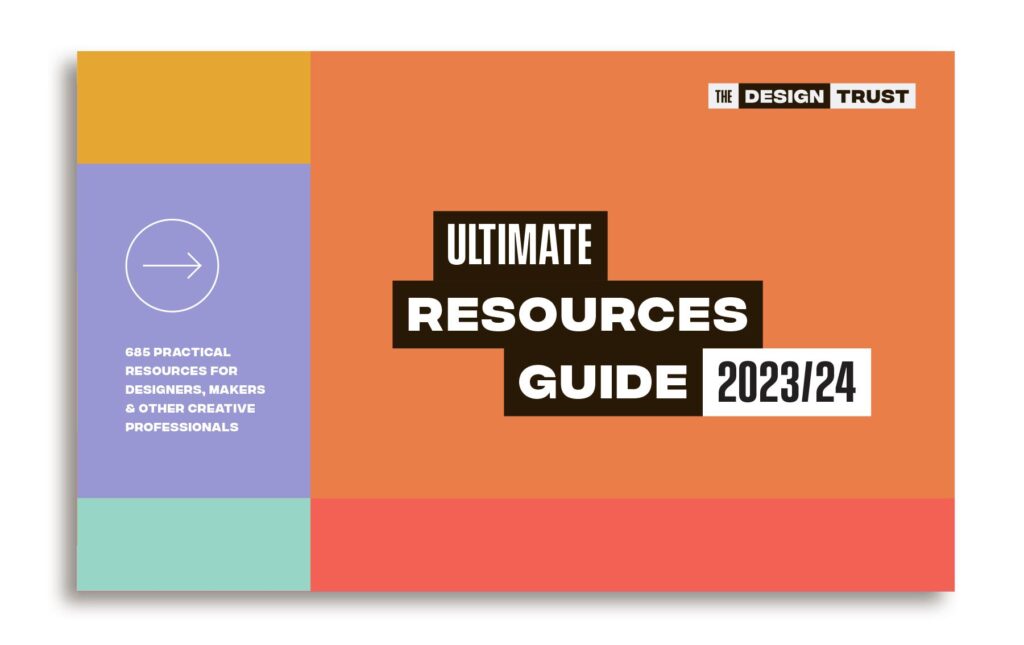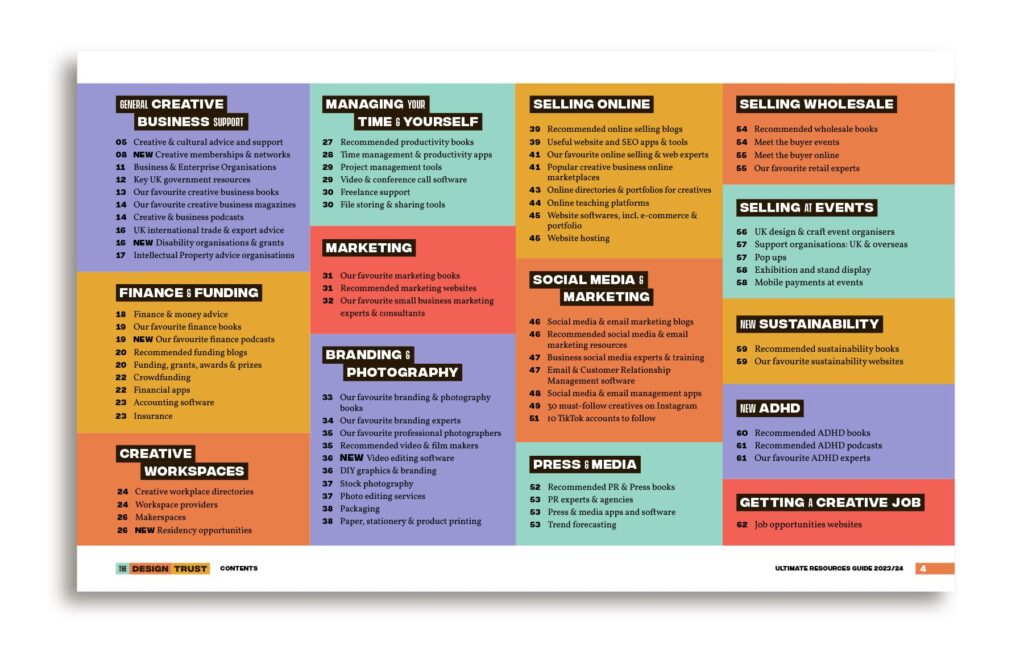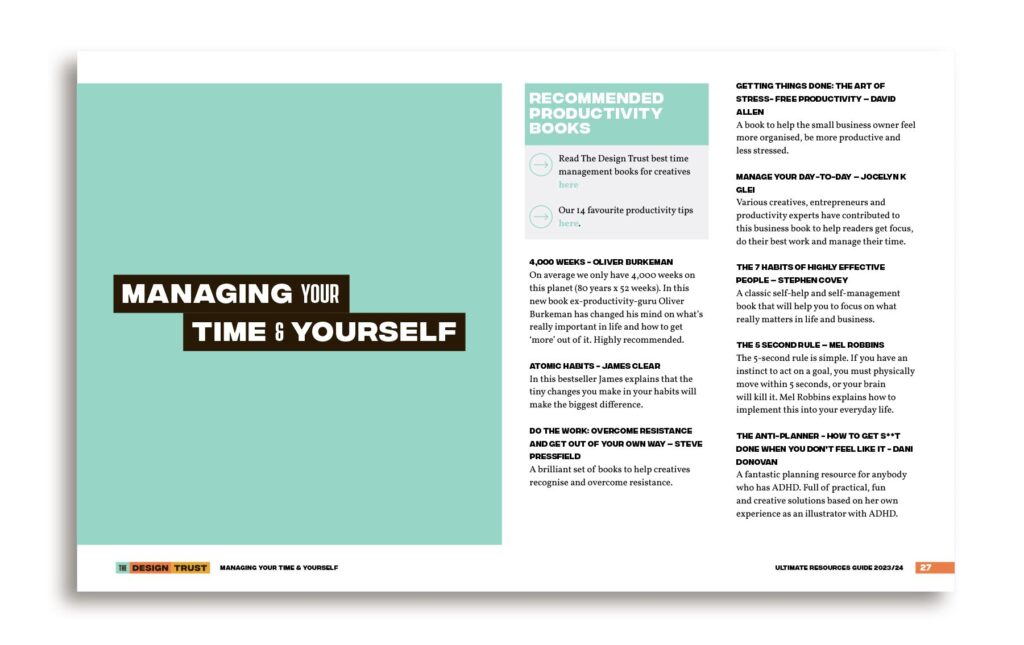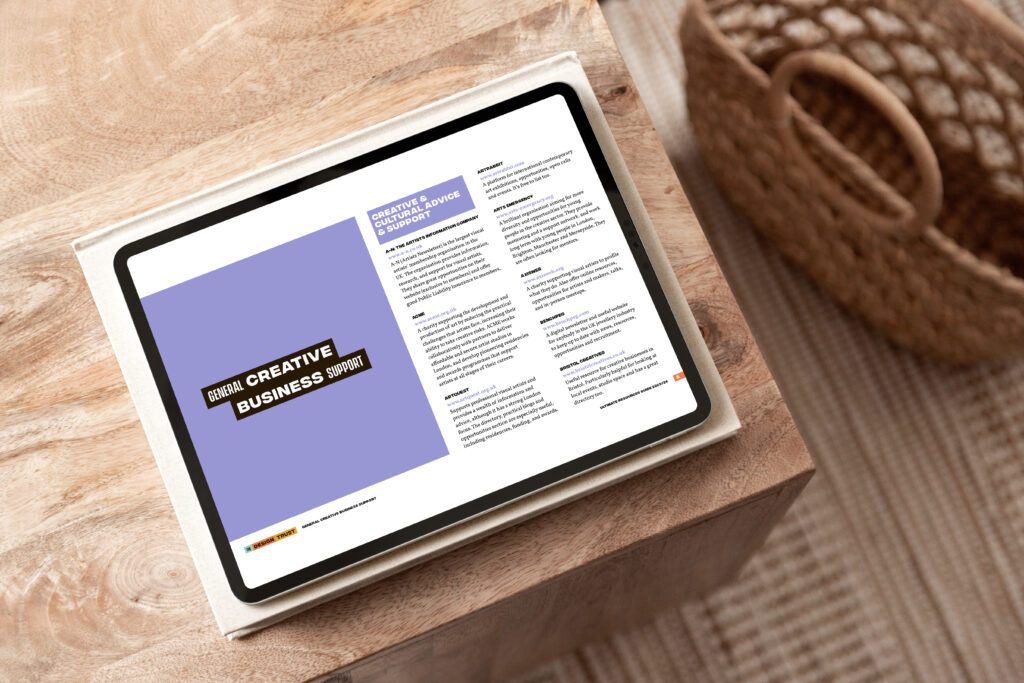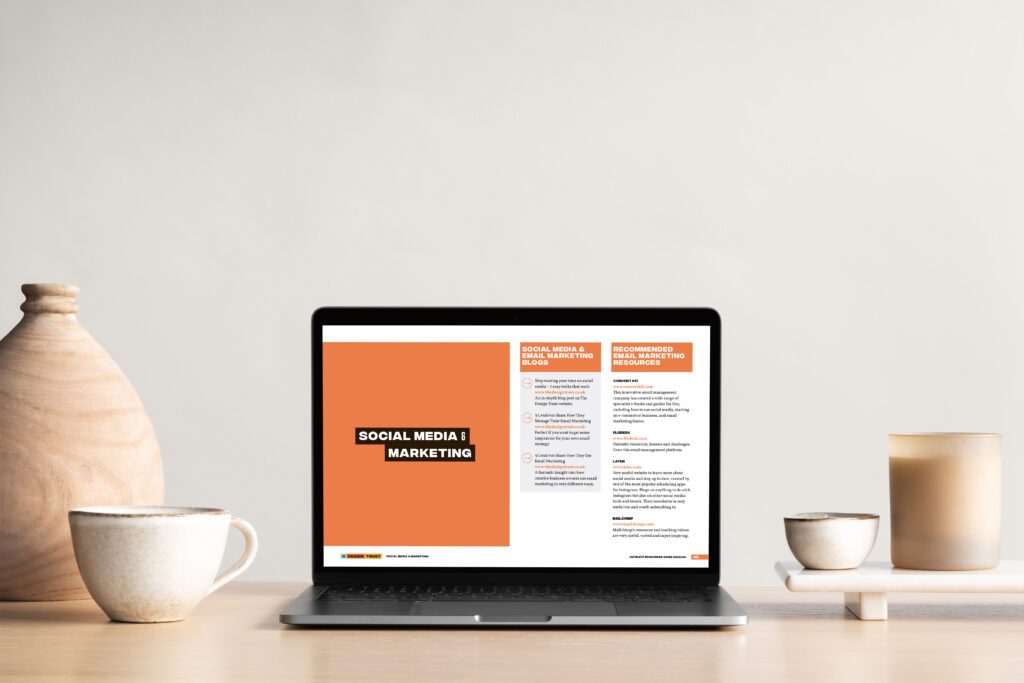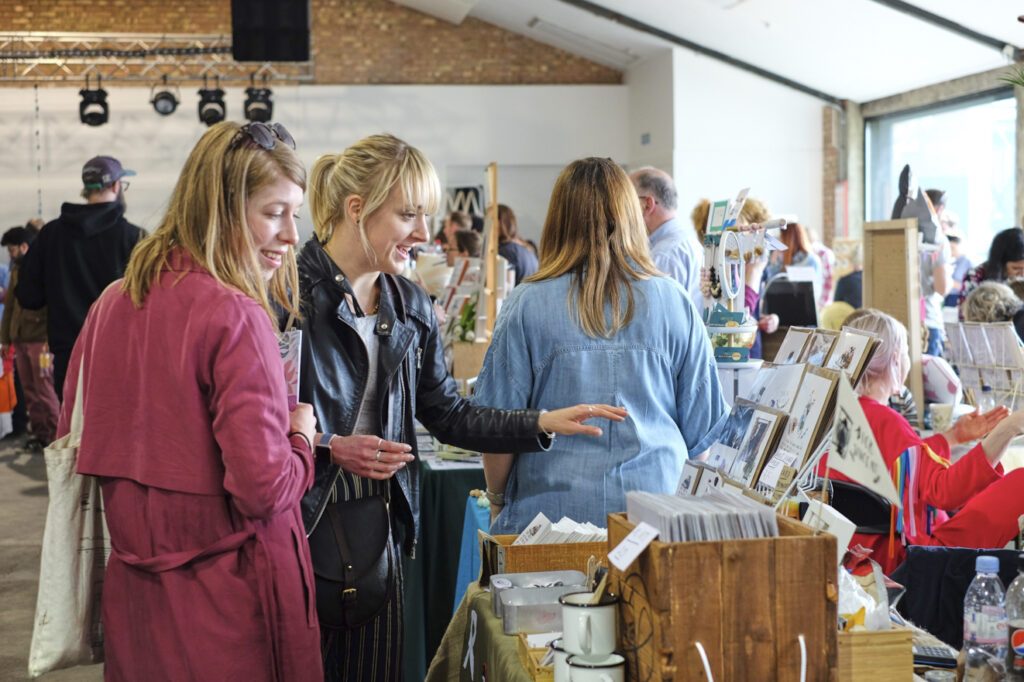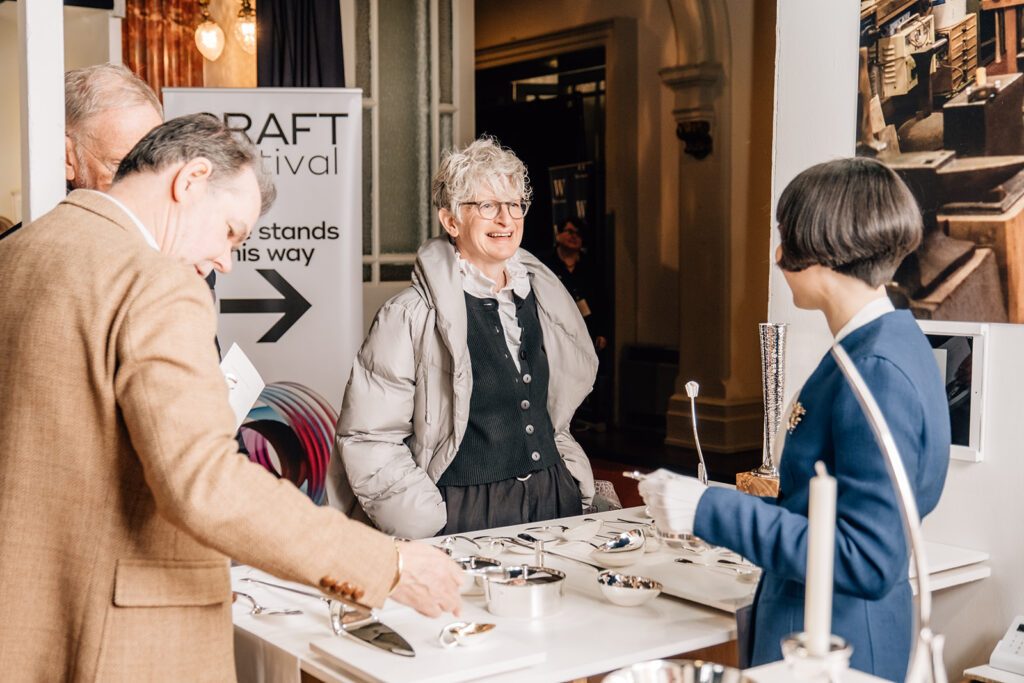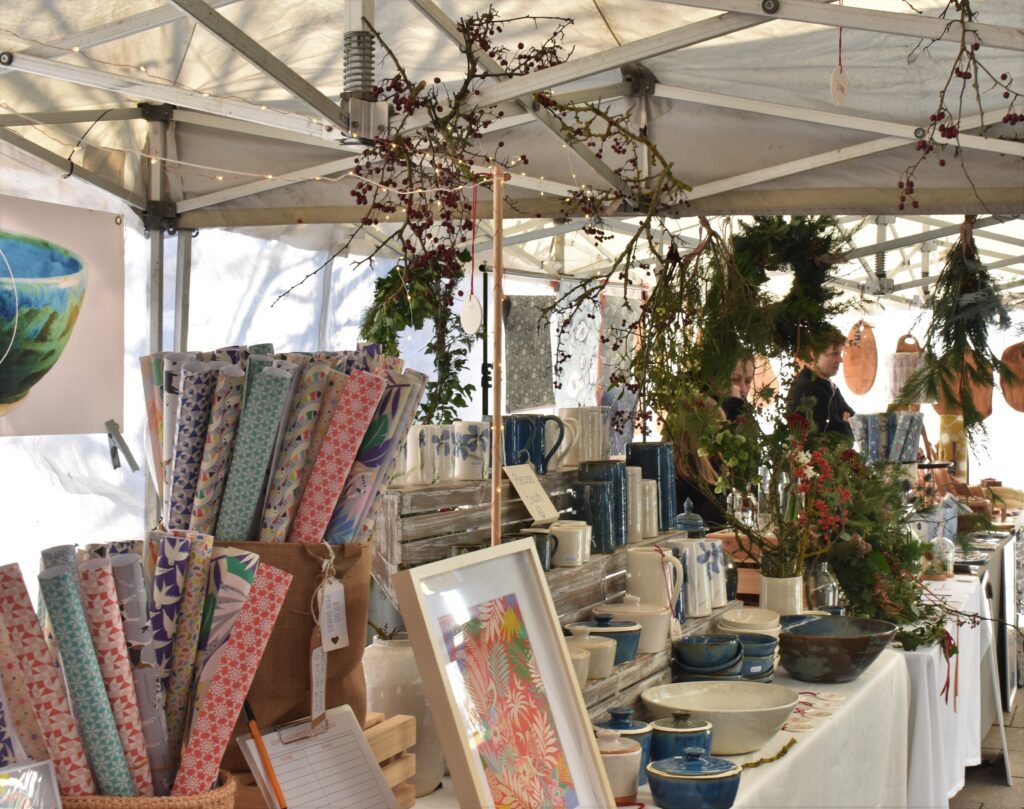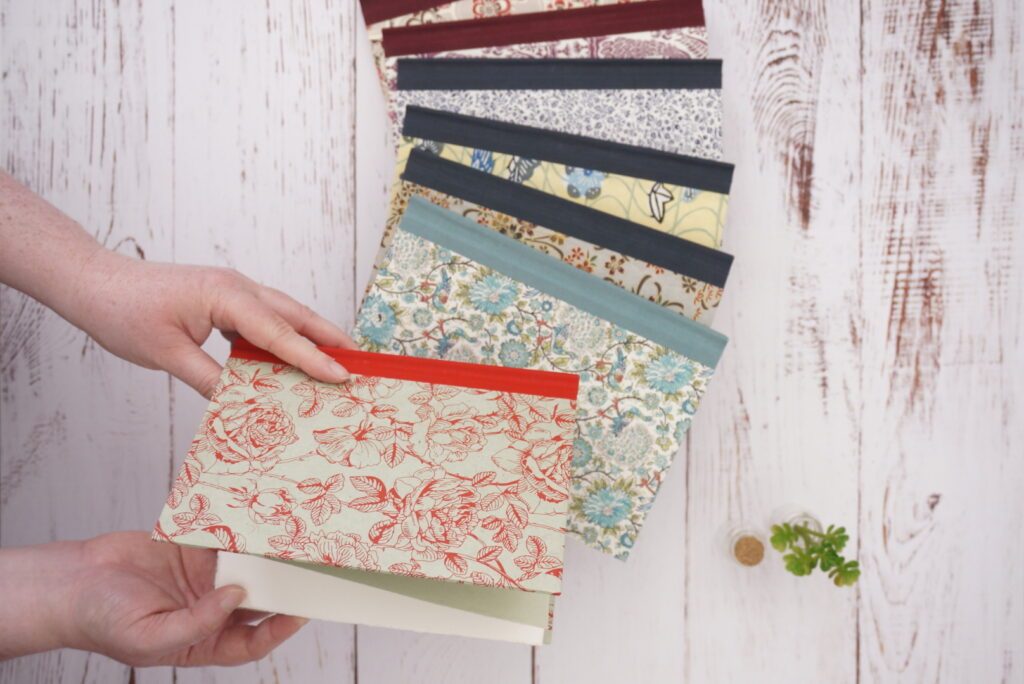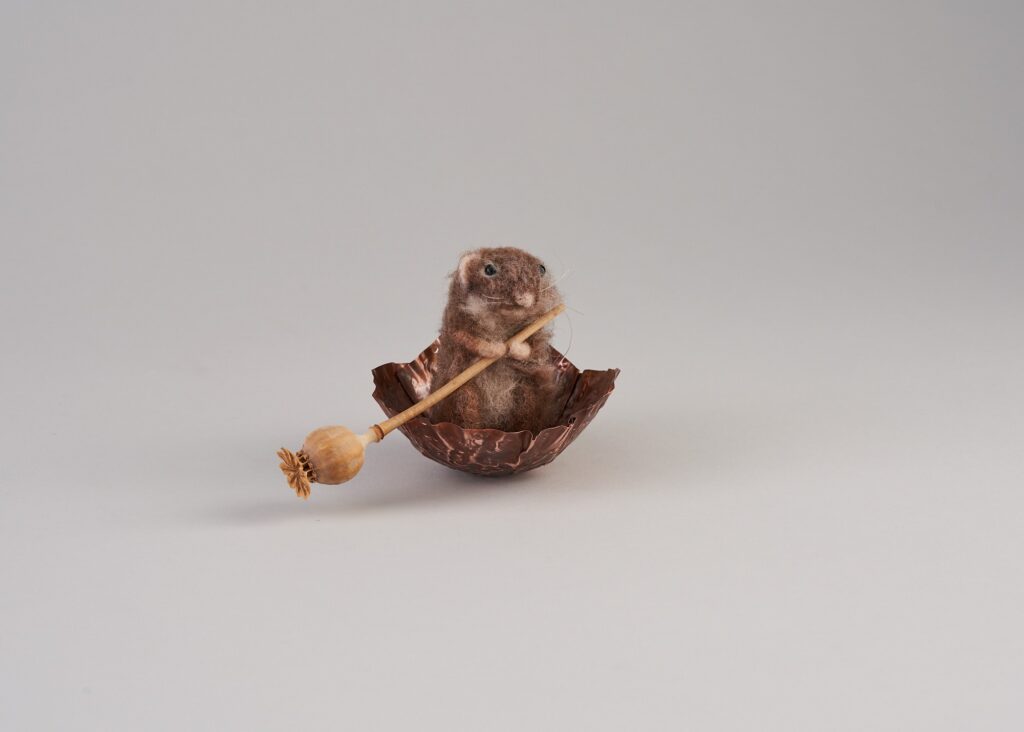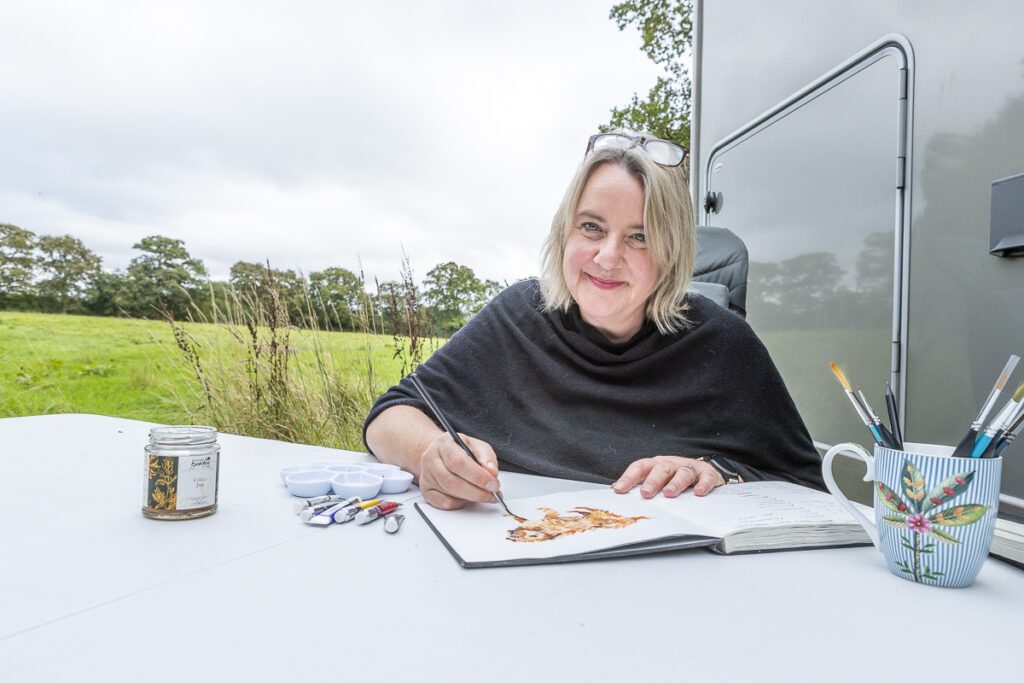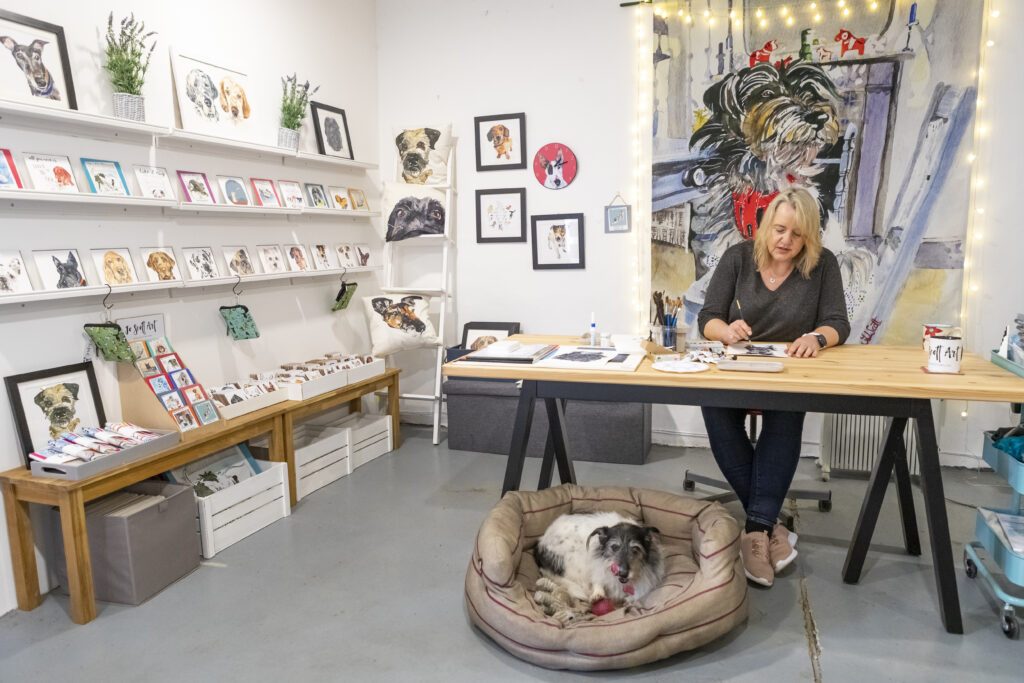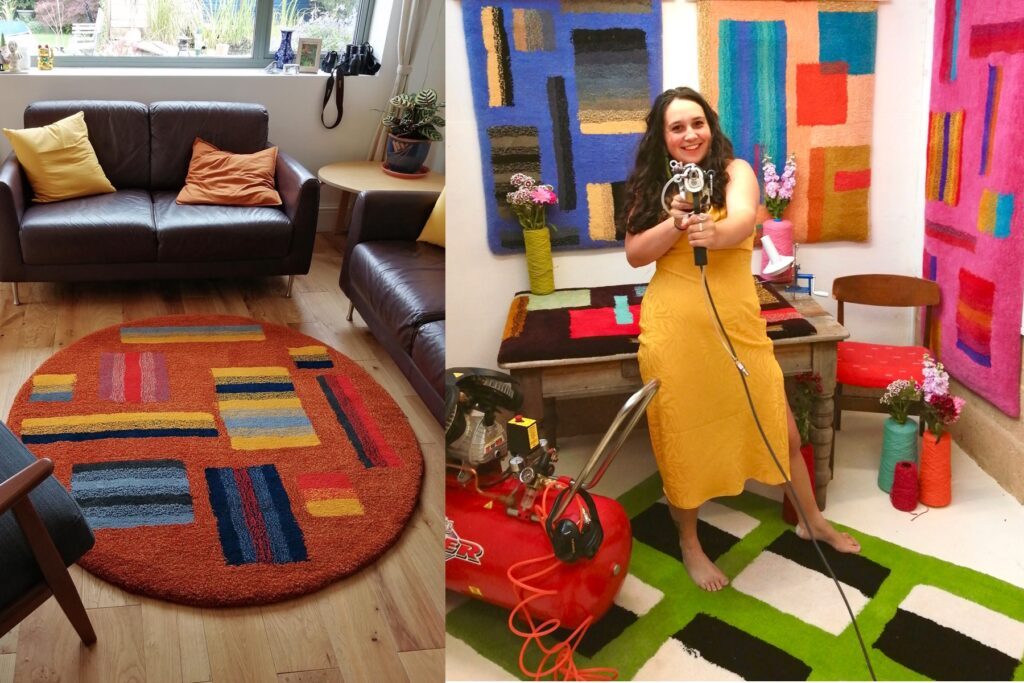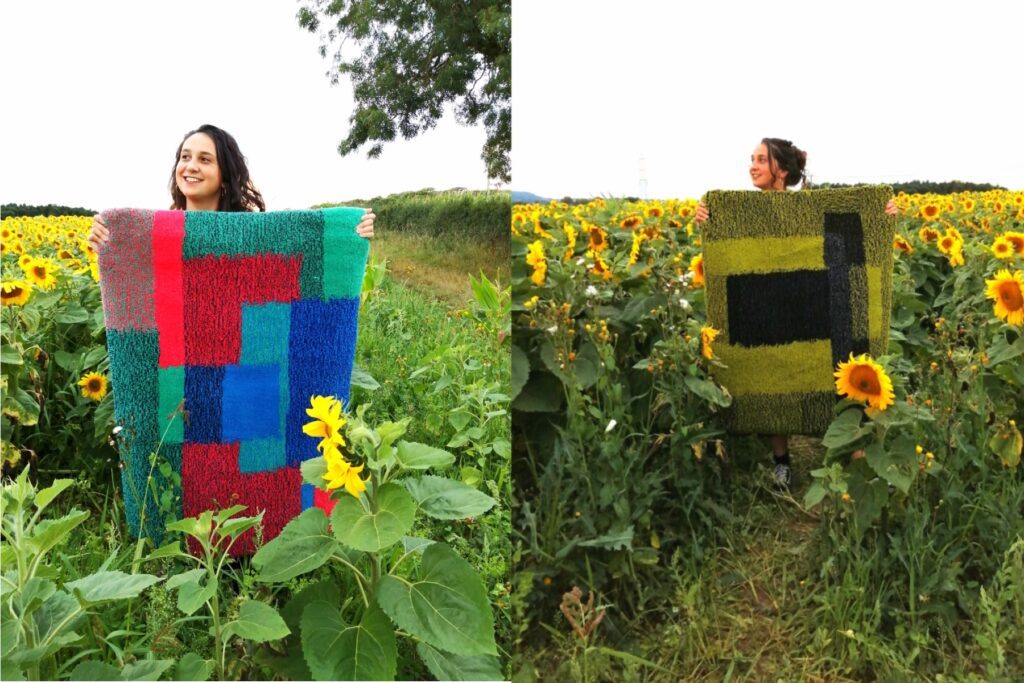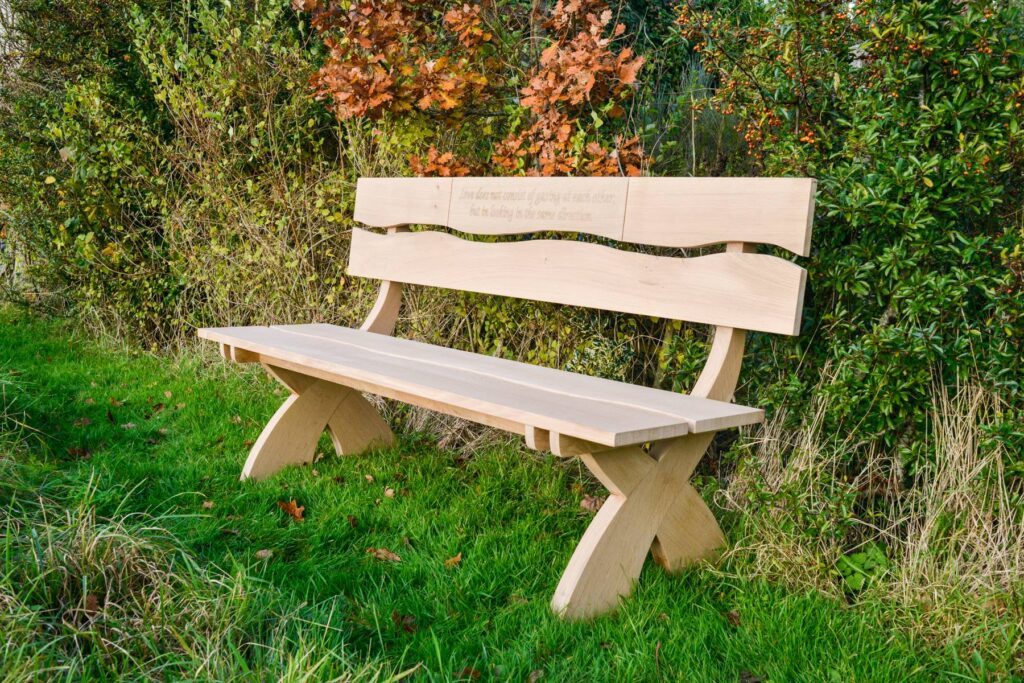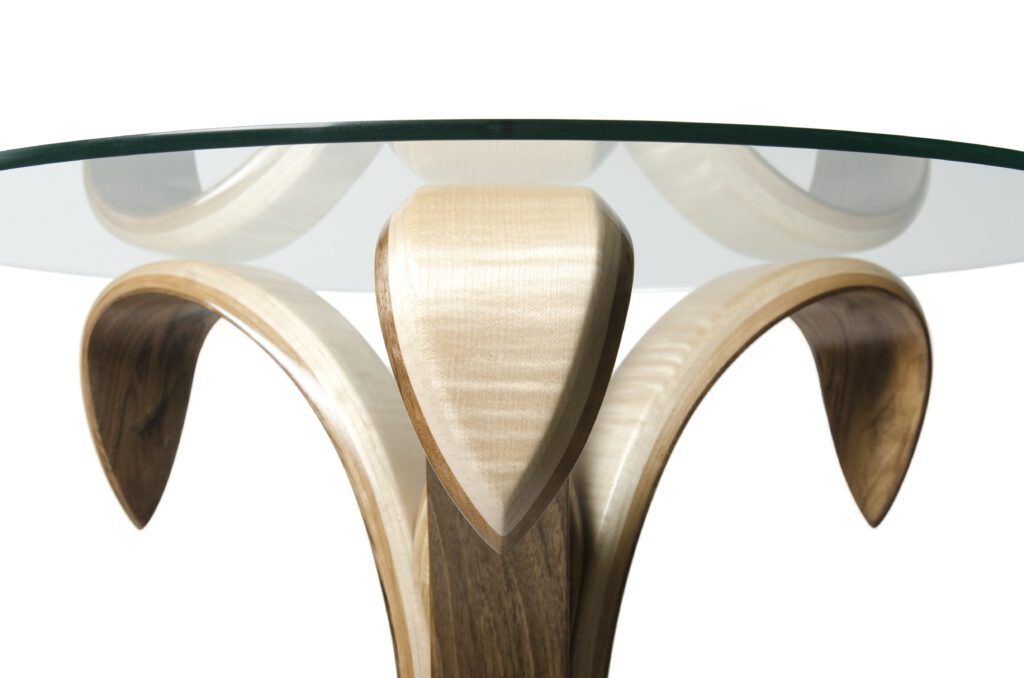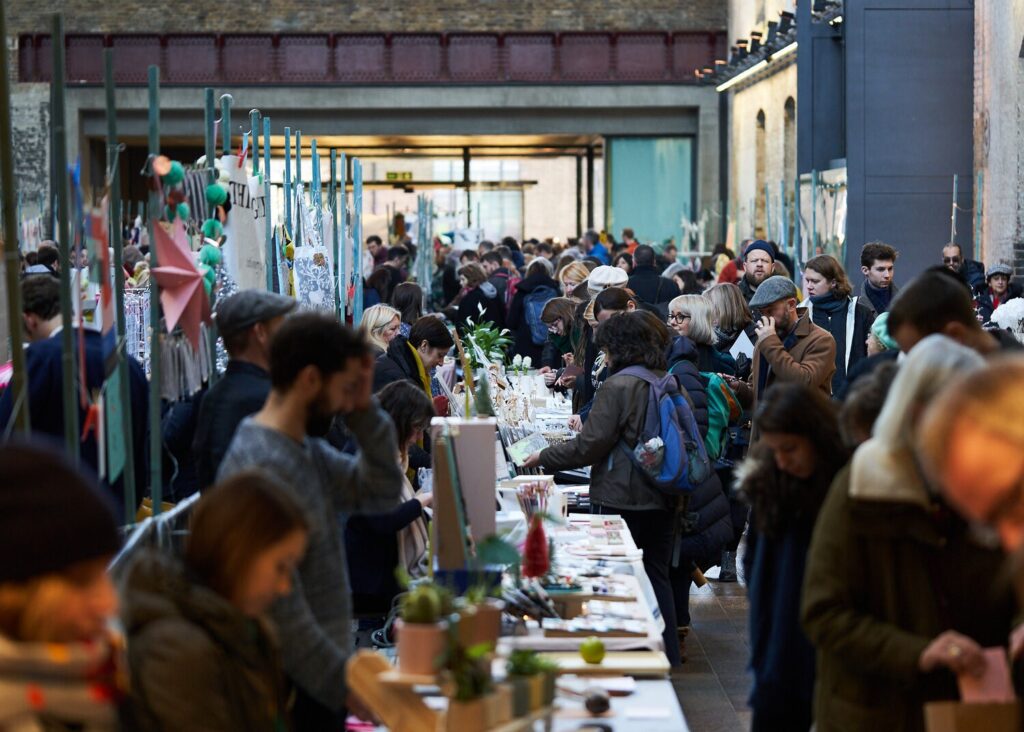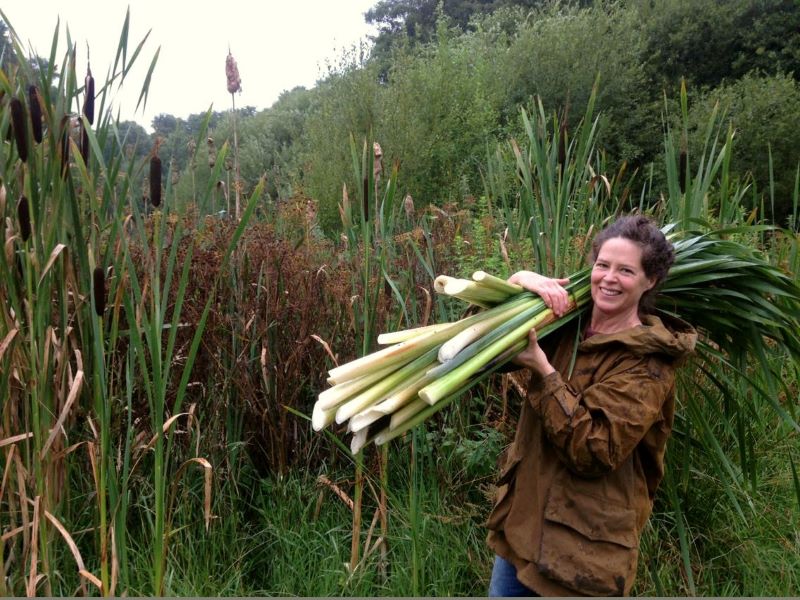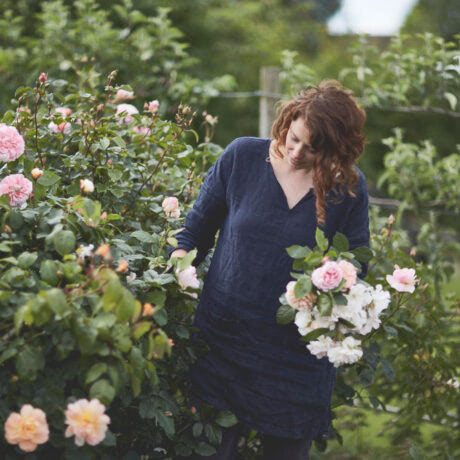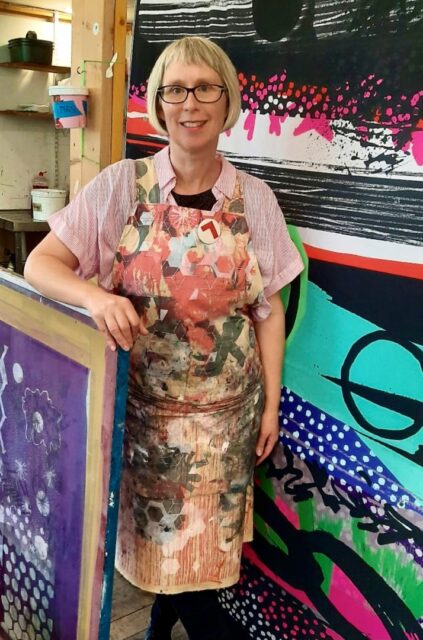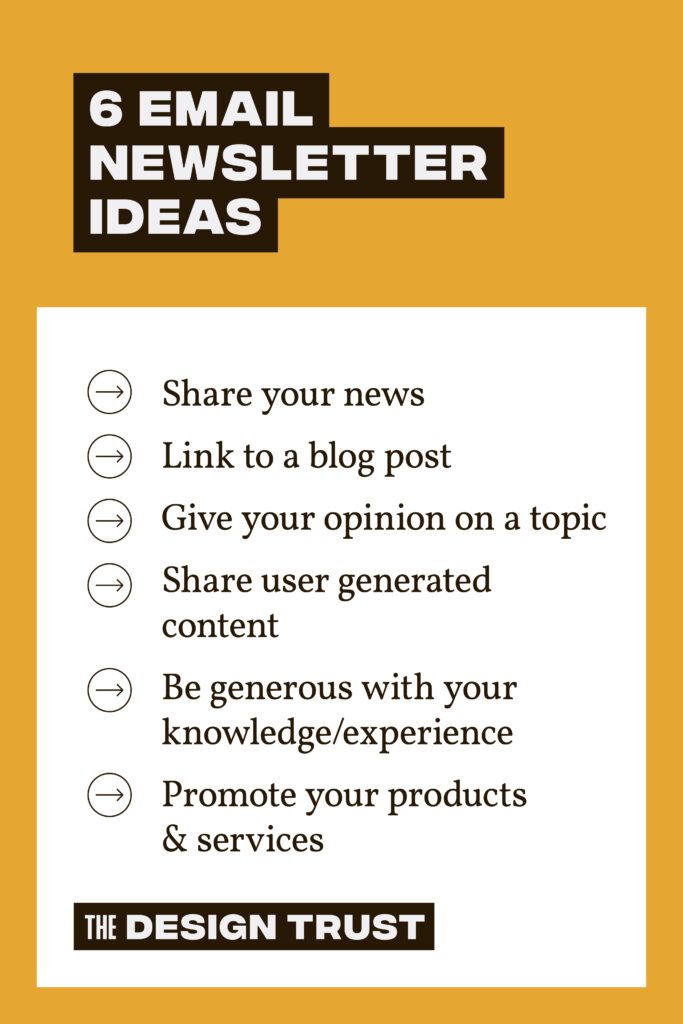Dear , A big welcome to The Design Trust 2024 diary + planner free course

are you ready to make the most of your 2024 diary & journal planner?
Welcome to your FREE 6-hour online business, finance & marketing planning course with The Design Trust, which is part of your purchase of the 2024 diary planner or journal planner.
I hope that you are really looking forward to 2024 and to make your creative business even better. With the help of our diary & journal planner and this free course!
You can find the recordings of all the pre-recorded and the two live workshops in January here below. Simply scroll down to access all the recordings and presentations as well.
You will have access to this course page till the end of 2024, and you can return to this page as often as you like.
We recommend that you make a note of the URL at the top, or bookmark this page to make it really easy to return later.
We hope you will get so much from these training session that will boost your business, planning, finance & marketing skills, knowledge & confidence!
Patricia van den Akker & Anne-Marie Shepherd – The Design Trust – the online business school for designers, makers & other creative professionals
video training: one-page-one-year-business plan (1h38″)
You can watch the recording of this session by clicking on the triangular button. If you want it full screen then press the four-arrow button on the recording. To return to small screen press the Esc button on your keypad.
This recording has English subtitles, that you can switch on/off by clicking on the cc icon in the bottom right of the recording.
This recording is annotated which means that it’s divided into ‘chapters’. Hover your mouse over the bottom of the recording on the broken links to see the chapter titles. This makes it easier to stop/start the recording whenever you like.
You can download the presentation of this recording here below. Please note that this is for your own personal use only and should not be shared with others who have not purchased the 2024 The Design Trust diary or journal planner.
Download “The Design Trust One Page One Year Business Plan workshop – 2024”
This training recording will help you to create a business plan for 2024, and uses The Design Trust 2024 A2 wall planner. If you pre-ordered our 2024 diary or journal planner then you will have received this as a free gift, and many of you have purchased this too. Alternatively use a large piece of paper to create your own one-year-one-page business plan for 2024.
In this session Patricia will share:
- Some very useful goal setting, creative business planning and time management techniques to help you set better goals for yourself and your business.
- The 9 steps that you need to go through to create an annual business plan.
We recommend that you spend 2-4 hours on creating your own business plan for 2024. You can stop/start the session whenever you like
video training: end of year review (38″)
You can watch the recording of this session by clicking on the triangular button. If you want it full screen then press the four-arrow button in the bottom right corner. If you want to return to the regular screen then press the Esc button on your key board.
This session has been annotated (see the interrupted link at the bottom of the recording). Hover of this with your mouse to make the various chapters visible. This will make it easier for you to start/stop this session or to watch a specific part again.
This session has English subtitles that you can switch on/off by clicking the cc button on in the bottom right of the recording.
You can download the presentation of this session here below: We recommend that you change the printing settings so that you get 4 slides on one page. Please note that this is for your own personal use only, and should not be shared with others who didn’t purchase a 2024 diary or journal planner. Thank you.
Download “TDT 2024 diary or journal planner / End of Year Review 2023”
This is part of our tradition at the end of the year … The End of Year Review. In this reflective session Patricia asks 7 big questions to reflect, review and celebrate 2023! Each have several layers. Some questions will be easy to answer, some might need some more work or research into your numbers. Some are thought-provoking others are inspiring. Do all of them or choose the questions that work for you!
Patricia also asks questions that might help you to get ready for 2024!
To do the full End of Year Review we recommend around 2-4 hours. But of course you can decide to only focus on 1 or 2 questions, and still get a lot out of working on those! The big advantage of learning online is … that you can stop / start this session whenever you like so that you can write down your answers in your own time.
You can use the End of Year Review pages at the end of your 2024 diary or journal planner with this training, or you can use a notebook. We recommend that you might want to do this review away from your usual workspace … and it’s perfect for that quiet period between Christmas and mid January.
video training: Quarterly planning & reviews (1h38″)
You can watch the recording of this session by clicking on the triangular button. Press the four-arrow button on the bottom right of the recording to make it full screen. Use the Esc button on your keypad to return to regular screen.
This recording is annotated which means it’s easy to stop/start the recording or to watch a specific session again. Hover your mouse over the broken line at the bottom of the recording to see the different chapters/exercises.
This recording has English subtitles which you can switch on/off by clicking on the c/c button in the recording.
You can download the presentation of this session here below. We recommend that you change the printing settings so that you get 4 slides on one page. Please note that this is for your own personal use only, and should not be shared with others who didn’t purchase a 2024 diary or journal planner. Thank you.
Download “TDT 2024 diary journal Quarterly Reviews & Planning – free course”
This video training explains in detail how to do the full Quarterly Review and Planning, with every exercises in the recurring quarterly planning explained in more detail. Patricia gives more detail about each of the different exercises and shares examples too of full plans, specific activities that you can do to improve your marketing or finance or other aspects of your business. She finishes this session by explaining the Quarterly Content Calendar with top tips on social media & email marketing too.
We highly recommend that you watch this session to give your planning, finance & marketing a boost and to get more examples.
video training: live workshop business planning (2h28″)
You can watch the recording of this live session by clicking on the triangular button. If you want it full screen then press the four-arrow button. To return to a regular screen press the Esc button on your key board.
This session is annotated (see the unbroken line at the bottom of the recording) to make it easier to stop/start watching this session. Hover your mouse over the line and you will see the different chapters.
This session has English subtitles that you can switch on/off by clicking on the cc button.
You can print off the presentation of this session below. I recommend that you change the printer settings so that you can print more slides on one page. Please note that this is for your own personal use only, and should not be shared with others who have not paid for the diary or planner as it’s our copyrighted materials.
Download “TDT 2024 diary planner free business planning workshop Jan 2024”
In this first free live workshop session for 2024 diary & journal planner buyers we will look at creative business planning:
- How to access the course hub.
- A quick intro to how the planning system works that Patricia has created. How often and when & what to plan? From big goals to annual goals, quarterly projects to monthly plans, to weekly & daily actions. Turn big ideas into do-able activities to make them possible!
- The foundation:
- 1) What’s your business dream? (p. 11) Your bigger purpose and longer term.
- 2) Why do you do what you do? (p. 14)= your motivation = where do you come from?
- 3) What are your values? p. 15 – 19) = What’s important to you? The glass jar exercise (p. 17)
- The core 4 business areas to create a sustainable creative business – you, finance, marketing & creative production
- What are your business goals for 2024? p. 12-13
- What do you want or need to work on … for your mental & physical health? Your finances? Marketing? Creative production? Set goals and SMART activities. How to spend your time?
- The big challenges …
- 1) How to stop procrastinating? The 6 reasons why we procrastinate and what to do about them?
- 2) How to stay on track?
- 3) How to plan for unpredictability?
- Want more support? Join our 2024 Quarterly Dream Plan Do Club!
video training: live workshop finance & marketing planning (2h29″)
You can watch the recording of this live workshop by clicking on the triangular button. If you want it full screen then press the four-arrow button. If you want it regular screen again then press the Esc button on your keyboard.
This session has been annotated (see the broken line at the bottom of the recording) to make it easier to stop/start the session or to find a specific chapter to watch that again. Hover your mouse over the broken link to see the chapter names.
This session has English subtitles that you can switch on/off by clicking on the CC logo on the recording.
You can download here below the presentation of this session, as well as the Excel template to create your own financial forecast. Please note that these are for your own personal use only, and should not be shared with others who have not paid for the diary or journal.
Download “The Design Trust 2024 diary planner Finance & Marketing Planning workshop – Jan 2024”
Download “TDT Financial forecast in 3 steps”
In this 2nd and final free online workshop Patricia shared:
- How to get back in charge of your finances …
- Is your creative business viable? The very useful and strategic 3 Question exercise (see p. 28-29) And what to do if your numbers don’t stack up? (p. 29)
- Have you set a financial goal yet? (p. 24-25) Why this is so important (especially if your turnover is low).
- Creating your financial forecast (p. 26-27)
Real client questions around finance (from the registration form):
- “How do I do a realistic budget in these unpredictable times? Or if I have never done one before?”
- “My costs are going through the roof! What do I do?”
- “How to price my time when a product takes a long time to make?”
- “Is there a formula on how to spend my expenses?”
- “How do you balance pricing your work when most galleries take a 50% cut?” We highly recommend you to read this blog post on our website.
Fundamental marketing:
- What do you want to be known for? (p.33) and identify your brand values (p. 33)
- Our marketing mantra: “People only buy from people they know, like & trust” (p. 34) How to build your profile, credibility & trust.
- Who are your ideal clients? (p. 38-39) How to identify them & get to know them.
Real client questions around marketing (from the registration form)
- “How do you make time for marketing? I am so busy already?”
- “How do I find my ideal clients for my jewellery workshops?”
- “I am not very good at writing. What’s the best way to do email marketing?”
- “How do I encourage my clients to stay with me, even though I have increased my prices?”
- Create a marketing plan in 3 steps: Set a financial goal, what are the marketing projects, what to do … if you want more online sales, trade orders, get higher end commissions, more from event sales, local sales and workshops.
- How to keep your finances & marketing on track?
- Patricia answered even more finance & marketing questions at the end of this session.
*BONUS’ video training: live workshop ‘planning with adhd’ with amanda perry (1h17″)
You can watch the recording of this session by clicking on the triangular button. To get it full screen press the four-arrow icon in the bottom right of the recording. To get it full screen again press the Esc button on your keyboard.
This recording has English subtitles that you can switch on/off by clicking on the CC logo in the bottom right of the recording.
We have annotated this recording – hover your mouse over the broken link at the bottom of this recording to see the titles of the different chapters. This makes it easier to stop/start watching specific parts of the video.
We invited ADHD expert Amanda Perry to talk to our Business Club members, but as we thought that our 2024 diary & journal users would find this session useful too we extended the invite, so this is a BONUS session for you! And I think a very useful one indeed. In this session Patricia interviews Amanda, and they discuss the following:
- What are the specific planning challenges for creative business owners with ADHD (traits)? From time blindness and seeing time in a differnt way to executive decision making to impulse and perfectionism.
- What are some of the bigger and practical solutions to manage your ADHD. (And yes it’s very personal for each person!)
- Is being employed or self-employed better suited to people with ADHD? The structure versus the flexibility …
- How to manage finance & marketing (two specifically challenging areas for business owners with ADHD)
- Dealing with the extremes of ADHD – the hyperfocus vs procrastination and burnout, and the very low self esteem and even self-loating versus very high expectations (God mode as Amanda calls it).
- What are the positives & strengths of ADHD?
- Questions from the audience around managing ADHD.
Find out more about Amanda Perry and how she works with founders and business owners on her website. Her Instagram account is very useful too.

